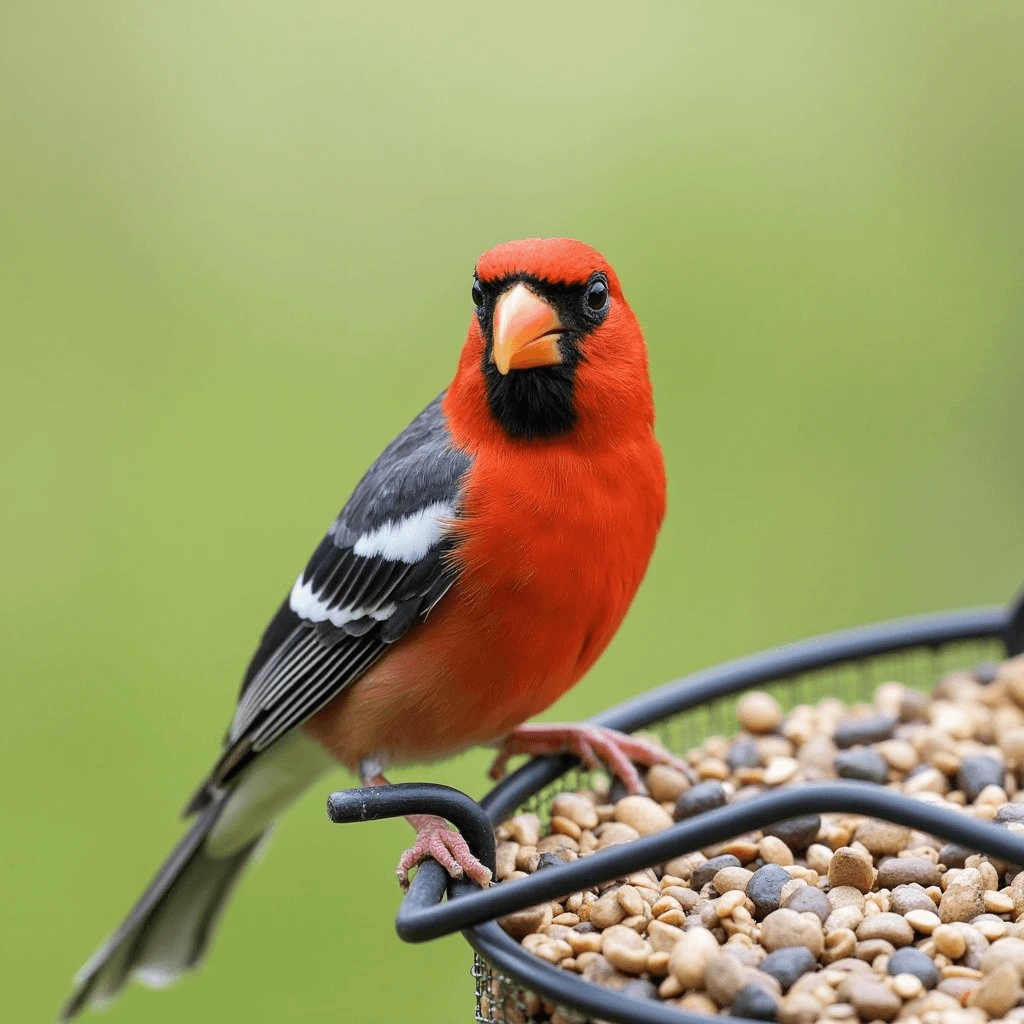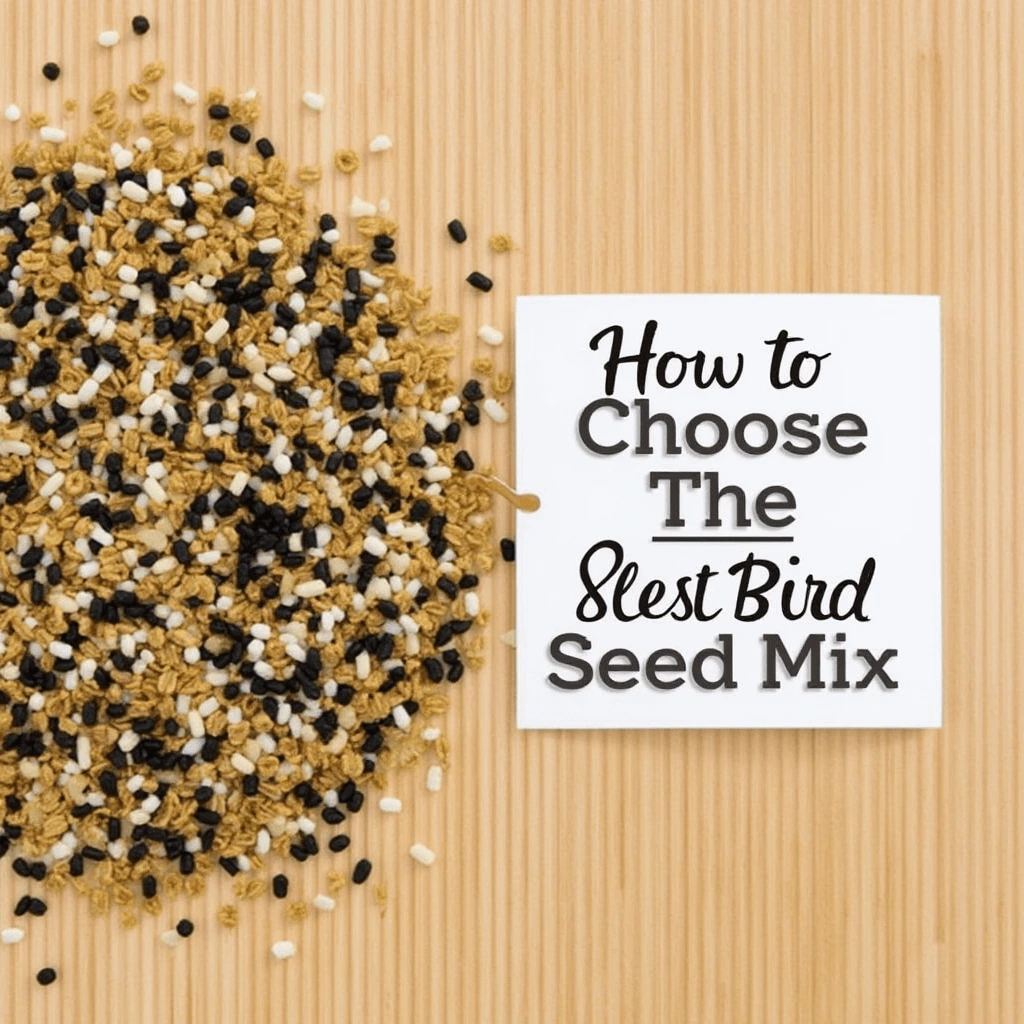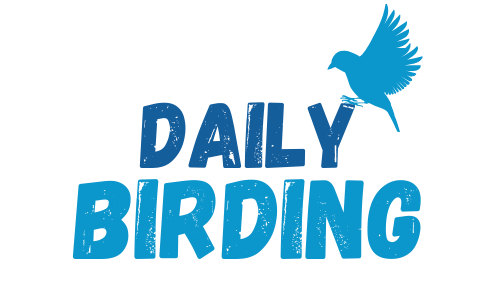The Ultimate Guide to Bird Seed Food: Attract More Birds to Your Yard
Imagine stepping outside in the morning to the cheerful chirping of birds, fluttering from feeder to feeder in your yard. Whether you’re a seasoned birdwatcher or just starting to invite feathered friends into your space, choosing the right bird seed food is the key to attracting a diverse and lively bird population.
Not all bird seeds are created equal—some are irresistible to finches and cardinals, while others cater to woodpeckers and doves. Offering the right mix can turn your backyard into a bird haven, bringing more color, songs, and activity to your daily life.
In this guide, we’ll explore the best bird seed options, how to select the right mix, and expert tips on feeding birds effectively. By the end, you’ll know exactly how to attract more birds while keeping them safe and well-fed.
TL;DR – Quick Summary
Sunflower seeds attract the widest variety of birds
Nyjer seeds are a favorite for finches.
Safflower seeds keep squirrels away.
Seed mixes work best when tailored to local bird species.
Proper feeder placement & maintenance can make a huge difference.
Let’s dive into the best bird seed food options and how to maximize your backyard birdwatching experience!
Best Bird Seed Food for Attracting a Variety of Birds

When it comes to attracting a diverse range of birds to your yard, choosing the right bird seed food is key. Some seeds are universally loved by many species, while others cater to specific birds. The following are the best bird seed options that will ensure your backyard becomes a lively birdwatching haven.
1. Black Oil Sunflower Seeds – A Universal Favorite
Black oil sunflower seeds are considered the gold standard for backyard bird feeding. They are rich in healthy fats and protein, making them a high-energy food source. Their thin shells make them easy to crack open, making them accessible for both small and large birds.

- Cardinals
- Chickadees
- Finches
- Woodpeckers
- Nuthatches

2. Safflower Seeds – The Squirrel-Resistant Choic
Safflower seeds are an excellent option if you want to attract birds but deter squirrels. Their slightly bitter taste makes them unappealing to squirrels and unwanted pests, while cardinals and other songbirds enjoy them.

- Cardinals
- Grosbeaks
- Titmice
- House Finches

3. Nyjer (Thistle) Seeds – The Best for Finches
Nyjer seeds (often called thistle seeds) are tiny, oil-rich seeds that are ideal for attracting small songbirds, especially finches. These seeds require a special finch feeder with tiny holes to prevent waste, as they are lightweight and can easily blow away.

- American Goldfinches
- House Finches
- Pine Siskins
- Redpolls

4. White Millet – A Staple for Ground-Feeding Birds
White millet is one of the best seeds for attracting birds that prefer foraging on the ground. It is particularly favored by small seed-eating birds and is a staple in many commercial seed blends.

- Mourning Doves
- Sparrows
- Juncos
- Towhees
- Quail

Final Thoughts
Using a combination of these top bird seed food options will attract a variety of birds to your yard. Consider experimenting with different feeders and seed placements to see which birds visit most frequently. Providing fresh, high-quality seeds consistently will keep your backyard lively and full of feathered visitors year-round.
Specialty Seeds for Specific Bird Species

While some bird seed options, like black oil sunflower seeds, attract a wide variety of birds, certain species have unique dietary preferences. By offering specialty seeds, you can attract specific types of birds and create a more diverse and lively backyard birdwatching experience. Below are some of the best specialty seeds and the birds they attract.
1. Striped Sunflower Seeds – Ideal for Larger Birds
Striped sunflower seeds are similar to black oil sunflower seeds but have a thicker, harder shell. This makes them less accessible to smaller birds but perfect for larger birds with stronger beaks. They are also less likely to be eaten by squirrels compared to black oil sunflower seeds.

- Blue Jays
- Northern Cardinals
- Grosbeaks
- Woodpeckers
- Mourning Doves

2. Cracked Corn – A Favorite for Ground-Feeding Birds
Cracked corn is dried corn that has been broken into smaller pieces, making it easier for birds to eat. It is an affordable, high-energy food that is especially attractive to ground-feeding birds and larger backyard visitors. However, it can also attract squirrels, raccoons, and deer, so placement is important.

- Mourning Doves
- Quail
- Pheasants
- Wild Turkeys
- Ducks and Geese

3. Peanuts – A High-Protein Treat for Woodpeckers and Jays
Peanuts are an excellent source of protein and fat, making them a perfect energy-rich food, especially during colder months. They are particularly loved by woodpeckers and blue jays, as well as other birds that enjoy breaking open shells to access the nut inside. You can offer peanuts whole, shelled, or in peanut butter form.

- Blue Jays
- Woodpeckers
- Nuthatches
- Chickadees
- Titmice

4. Suet Cakes – The Best Winter Food for Insect-Eating Birds
Suet is a high-fat, high-energy food made from animal fat mixed with seeds, nuts, and dried fruit. It is a perfect food source for insect-eating birds, especially during winter when natural food is scarce. Suet cakes come in various flavors, including peanut butter, berry, and insect blends.

- Woodpeckers
- Nuthatches
- Chickadees
- Wrens
- Starlings

Final Thoughts
By incorporating these specialty seeds and food options, you can attract a wider variety of bird species to your yard. Offering a mix of striped sunflower seeds, cracked corn, peanuts, and suet will help cater to different feeding habits and seasonal needs. The key is to experiment and observe which birds visit your yard the most, then adjust your food offerings accordingly.
How to Choose the Best Bird Seed Mix

Selecting the right bird seed mix is crucial for attracting a diverse range of birds to your yard. A high-quality mix should provide nutritional value, cater to the feeding habits of different bird species, and minimize waste. However, not all commercial bird seed mixes are created equal—some contain filler seeds that many birds ignore, leading to wasted food and a messy feeding area. Here’s how to choose the best bird seed mix for a thriving backyard bird population.
1. Identify the Birds You Want to Attract
Different bird species have unique dietary preferences, so the first step in choosing a seed mix is deciding which birds you want to attract.
Mix for a Variety of Songbirds:
- Black oil sunflower seeds (attracts finches, chickadees, cardinals, and woodpeckers)
- White millet (loved by sparrows, doves, and towhees)
- Nyjer (thistle) seeds (best for finches and siskins)
Seed Mix for Ground-Feeding Birds:
- Cracked corn (attracts quail, doves, and juncos)
- White millet (ideal for ground-feeding songbirds)
- Safflower seeds (loved by cardinals and grosbeaks)
Seed Mix for Woodpeckers and Jays:
- Whole peanuts or peanut pieces
- Suet nuggets or suet cakes
- Sunflower seeds (striped or black oil)

2. Avoid Filler Seeds That Birds Won’t Eat
Many store-bought bird seed mixes contain low-quality filler ingredients that most birds ignore. These seeds increase waste, attract pests like rodents, and make a mess around your feeder.

- Red milo – Only a few species, like doves and cowbirds, eat it
- Wheat and oats – Low nutritional value and ignored by most birds
- Flaxseed and rapeseed – Too small and often discarded
Instead, look for premium seed mixes that contain at least 80% high-energy seeds like sunflower, millet, or Nyjer.

3. Choose a Fresh, High-Quality Seed Mix
Birds prefer fresh, high-energy seeds over old, stale, or moldy ones. Seeds that have been sitting on store shelves for too long may lose their nutritional value and develop fungus or bacteria, which can harm birds.

- Look for bright, plump seeds with no discoloration or musty odor
- Avoid bags with excessive dust or cracked, dry-looking seeds
- Buy from reputable brands or local birding stores known for quality

4. Consider the Right Feeder for Your Seed Mix
Different bird seed mixes work best with specific types of feeders. Choosing the right feeder ensures that birds can easily access the seeds without excessive waste.

- Tube feeders – Best for sunflower seeds, Nyjer, and mixed seeds
- Hopper feeders – Ideal for mixed seeds, sunflower, and safflower
- Tray/platform feeders – Great for millet, cracked corn, and peanut pieces
- Nyjer feeders – Specially designed for small finches that eat Nyjer seeds

5. Buy in Bulk or Make Your Own Custom Mix
Buying bird seed in bulk can save money and ensure you always have fresh food available for your backyard birds. If commercial mixes contain too many filler seeds, consider making your own custom mix with high-quality ingredients.

- 40% black oil sunflower seeds
- 30% white millet
- 15% Nyjer seeds
- 10% peanut pieces
- 5% cracked corn (optional for ground-feeding birds)

Final Thoughts
Choosing the best bird seed mix is about quality over quantity. Avoid filler seeds, pick a fresh and nutritious blend, and use the right feeder for the mix. By offering a well-balanced combination of seeds, you can attract a diverse range of birds to your yard and enjoy a thriving backyard birdwatching experience.
Best Ways to Offer Bird Seed Food in Your Yard

Providing bird seed in your yard isn’t just about scattering seeds and hoping for the best. The way you offer food plays a significant role in attracting different bird species, minimizing waste, and keeping feeders safe from pests like squirrels and raccoons. By choosing the right feeder types, strategic placement, and proper maintenance, you can create an inviting environment for birds while ensuring they get the nutrition they need.
1. Use the Right Bird Feeders for Different Seeds
Not all birds eat the same way—some prefer to perch and peck, while others hop on the ground to forage. Choosing the correct feeder type ensures that birds can easily access food and prevents unnecessary waste.

| Feeder Type | Best for These Seeds | Birds Attracted |
|---|---|---|
| Tube Feeders | Black oil sunflower, Nyjer, mixed seeds | Finches, chickadees, sparrows, titmice |
| Hopper Feeders | Sunflower, safflower, millet | Cardinals, grosbeaks, jays, woodpeckers |
| Tray/Platform Feeders | Cracked corn, peanuts, millet, mixed seeds | Doves, juncos, grosbeaks, sparrows |
| Nyjer (Thistle) Feeders | Nyjer seeds | Goldfinches, siskins, redpolls |
| Suet Feeders | Suet cakes, peanut butter suet | Woodpeckers, chickadees, wrens, nuthatches |

2. Offer Food in Multiple Locations
Birds are naturally cautious, and if a feeder is placed in the wrong spot, they may hesitate to visit. Placing feeders in the right locations can encourage more bird activity while reducing risks from predators.

- Near shrubs or trees – Provides cover and a quick escape from predators
- Away from direct wind and rain – Prevents seeds from getting wet and moldy
- At different heights – Some birds, like doves and sparrows, prefer ground feeding, while finches and chickadees prefer higher placements
- A few feet away from windows – Reduces the risk of bird collisions

- Too close to dense bushes (where cats may hide and ambush birds)
- Near busy walkways or high-traffic areas
- Underneath low-hanging branches (which squirrels can use to jump onto feeders)

3. Keep Feeders Clean and Well-Maintained
Dirty feeders can spread diseases among birds, attract pests, and cause seed spoilage. Regular maintenance ensures that birds have a safe and healthy feeding environment.

- Wash feeders every 1-2 weeks with warm, soapy water
- Disinfect with a 10% bleach solution (1 part bleach, 9 parts water) every month
- Allow feeders to dry completely before refilling
- Remove wet or moldy seeds immediately to prevent bacteria growth

4. Prevent Squirrels and Other Pests from Stealing Seeds
Squirrels, raccoons, and even deer can raid bird feeders, leaving little food for the birds. To keep them at bay, use squirrel-proofing techniques.

- Use squirrel-proof feeders with weight-sensitive perches that close when a heavy animal lands
- Install a baffle (cone-shaped guard) on poles to prevent climbing
- Hang feeders at least 10 feet from trees and 5 feet off the ground
- Offer safflower seeds—birds love them, but squirrels dislike their bitter taste

5. Scatter Seeds on the Ground for Ground-Feeding Birds
Not all birds visit feeders—many species, like mourning doves, juncos, and towhees, prefer to forage on the ground. Offering seeds directly on the ground or using a low platform feeder can attract these birds.

- Cracked corn
- White millet
- Safflower seeds
- Black oil sunflower seeds

Final Thoughts
The best way to offer bird seed food in your yard depends on the bird species you want to attract, the type of seeds you use, and how you manage feeders and feeding locations. By using the right feeders, placing them strategically, keeping them clean, and preventing pests, you can create a bird-friendly environment that supports healthy, happy backyard birds.
Additional Tips for Attracting More Birds
Providing high-quality bird seed food is just one part of the equation when it comes to attracting more birds to your yard. To make your space truly bird-friendly, you need to create a welcoming environment that meets their needs for food, water, shelter, and safety. The more inviting your yard is, the more bird species you’ll attract—and the longer they’ll stay.
Here are some effective tips to maximize bird activity in your yard:
1. Provide a Clean and Reliable Water Source
Birds need fresh water for drinking and bathing, especially in hot summers and freezing winters when natural water sources can be scarce. A bird bath, fountain, or small pond can significantly increase the variety of birds visiting your yard.

- Use a shallow bird bath (1-2 inches deep) with a rough bottom for better grip
- Change the water daily to prevent bacteria and mosquito breeding
- Place the bird bath near trees or shrubs to provide birds with a quick escape route
- Use a water dripper or fountain—moving water attracts more birds and prevents stagnation

2. Plant Native Trees, Shrubs, and Flowers
Birds are naturally drawn to landscapes that mimic their natural habitats. Native plants provide food, shelter, and nesting sites while attracting insects that birds feed on.

- Berry-producing shrubs: Elderberry, serviceberry, dogwood, and holly
- Seed-producing flowers: Sunflowers, coneflowers, black-eyed Susans, and asters
- Nectar-rich flowers for hummingbirds: Bee balm, trumpet vine, columbine, and salvia
- Trees for shelter and nesting: Oak, pine, maple, and willow

3. Add Nesting Boxes and Natural Shelter
Birds need safe spaces to nest and raise their young, and providing the right nesting options can encourage them to settle in your yard.

- Install birdhouses or nesting boxes suited for species like chickadees, wrens, bluebirds, and owls
- Leave dead trees or large branches when safe—many birds, including woodpeckers and owls, nest in cavities
- Grow dense shrubs or hedges to provide natural cover for ground-nesting birds
- Offer nesting materials such as small twigs, dry grass, moss, and pet fur (avoid synthetic fibers)

4. Create a Safe Environment by Reducing Threats
Even if you provide food and water, birds won’t stay long if they don’t feel safe. Reducing common hazards in your yard will encourage more birds to visit and return regularly.

- Prevent window collisions by using decals, netting, or external screens
- Keep cats indoors or use deterrents like motion-activated sprinklers
- Limit the use of bright outdoor lights at night to prevent disorientation
- Avoid using rodenticides and chemical pesticides, as they can harm birds indirectly through the food chain

5. Offer a Variety of Bird Seed and Feeding Options
While providing one type of seed will attract a few species, offering a diverse selection can bring in a wider variety of birds. Mixing different seeds and using multiple feeder types can enhance the overall birdwatching experience.

- Use multiple feeders with different seed types to attract a diverse range of birds
- Scatter some seeds on the ground for species that prefer foraging
- Add a suet feeder for insect-eating birds like woodpeckers and nuthatches
- Offer fruit slices (oranges, apples, grapes) to attract orioles, robins, and tanagers

Conclusion: Creating a Bird-Friendly Haven with the Right Bird Seed Food
Attracting birds to your yard isn’t just about scattering seeds—it’s about choosing the right bird seed food, offering a variety of feeding options, and creating a welcoming environment. Whether you’re looking to attract colorful cardinals, chirping finches, or energetic woodpeckers, the key is knowing which seeds work best and how to present them.
By using high-quality seeds like black-oil sunflower, nyjer, safflower, millet, and peanuts, you can entice a diverse range of birds to visit your yard regularly. Pair this with proper feeder placement, a clean water source, and safe shelter, and you’ll have a thriving backyard filled with beautiful bird activity.
So, are you ready to transform your outdoor space into a birdwatcher’s paradise? Start experimenting with different bird seed options and watch your feathered visitors flock in!





